Gwanghwamun Gate (광화문)
2024-12-04
161 Sajik-ro, Jongno-gu, Seoul
+82-2-3700-3900
Built in 1395 under the reign of King Taejo, the first king of the Joseon dynasty, Gwanghwamun Gate is the southern gate of Gyeongbokgung Palace. It is also the main gate of the palace, therefore larger and fancier in comparison to the other gates. Gwanghwamun Gate consists of three arched gates; the center gate was used by the king, while the other two were used by the crown prince and royal officials. The tall granite walls of the gate serve as a platform for the wooden gate tower that watches over the city. The gate has a sign with its name written at the top center of the gate tower.
Gwanghwamun Gate went through several damages and restorations over the course of history. It was first severely damaged during the Imjin War (1592-1598) and was not restored until the reconstruction of Gyeongbokgung Palace in 1864. Under the Japanese administration, the gate was demolished and relocated to the north of the palace's eastern gate, followed by series of damages during the Korean War (1950-1953). In 1968, Gwanghwamun Gate was relocated back to the south of the palace and was rebuilt using concrete; however, the gate’s position was shifted a few meters away from its original location. In 2006, a major reconstruction project took place to restore Gwanghwamun Gate to its original state and location, disassembling the structure completely and replacing concrete with granite and wood. After three years and eight months of construction, Gwanghwamun Gate was fully restored to its original form and was open to the public on August 15, 2010.
Seonamgyegok Valley (Haseonam Rock) (선암계곡(하선암))
2021-05-14
1337, Seonamgyegok-ro, Danyang-gun, Chungcheongbuk-do
+82-43-422-1146
Seonamgyegok Valley is a clean 10-kilometer valley stretching from Gasan-ri to Daejam-ri in Danyang. Among the Eight Scenic Views of Danyang, Teukseonam Rock and Soseonam Rock are located here. This valley is known for its dense forests, strange rock formations, and clear and clean valleys, and is one of the best destinations in summer to camp and play in the water. Nearby attractions include Soseonam Recreational Forest, Teukseonam Camping Site, Soseonam Amusement Park, and Special Seonam Camping Site.
Gongju Tomb of King Muryeong and Royal Tombs [UNESCO World Heritage] (공주 송산리 고분군과 무령왕릉 [유네스코 세계문화유산])
2024-01-08
37-2 Wangreung-ro, Gongju-si, Chungcheongnam-do
The Songsan-ri Tombs and Royal Tomb of King Muryeong (r. 462-523) contain representative relics of the Baekje period (234-678). The Songsan-ri Tombs contain the graves of kings from the period when Baekje's capital was Gongju, and it is believed to contain 17 such graves. Only seven graves have been discovered so far. There are two types of tomb designs: traditional Baekje-style rock and earth fortification tomb and Chinese-influenced rock tomb. The tombs number one to five were made using the traditional Baekje-style design while tomb number six and the Royal Tomb of King Muryeong were made using the Chinese-influenced design. Even though many artifacts were stolen from the tombs, the tombs serve as an important evidence of Baekje culture and the foreign exchanges from during that period.
Geojedo Haegeumgang Islets (거제도 해금강)
2024-03-06
1 Galgot-ri, Nambu-myeon, Geoje-si, Gyeongsangnam-do
+82-55-639-4792
Haegeumgang Islets is a tourist attraction located in front of the Windy Hill on Geojedo Island, known as a rocky island within the Hallyeohaesang National Park. While its shape resembles the spreading roots of arrowroot, hence its name "Galdo," it is widely referred to as Haegeumgang, representing the sea's Geumgangsan Mountain. Famous for its sunrise and sunset views, they are best observed from Ilwolbong Peak or Sajabawi Rock. Visitors can enjoy stunning landscapes, including the Sipja Cave, Mireukbawi Rock, Chotdaebawi Rock, and a 1,300-year-old pine tree, by taking a ferry tour.
Seoul Namsan Park (남산공원(서울))
2024-03-18
231 Samil-daero, Jung-gu, Seoul
Namsan Mountain rises in the heart of Seoul at an altitude of 265 meters and has been a significant landmark since the Joseon dynasty (1392-1897), leaving behind several ruins. It was heavily damaged in the early 20th century, but was partially restored in 1968 with the creation of the park. Highlights include Namsan Tower and love locks left by numerous couples. Visitors can also easily reach the top by a cable car or bus.
Anmyeondo Island Recreational Forest (안면도자연휴양림)
2020-06-09
3195-6, Anmyeon-daero, Taean-gun, Chungcheongnam-do
+82-41-674-5019
Anmyeondo in Taean is home to a 100 year old pine tree forest that is special in Korea. The natural forest was managed by the royal family during the Goryeo Dynasty and since 1965 has been managed by the province of Chungcheongnam-do.
The Forest Exhibition Hall in Anmyeondo Recreational Forest displays the producing process of wood, the uses of wood, the forest’s worth, and more in an easy to comprehend manner. The Forest Cabin and Forest Recreation Center have a gas stove, cooking utensils, and shower facilities.
Daehangno (University Street) (대학로)
2021-03-25
104, Daehak-ro, Jongno-gu, Seoul
+82-2-2148-1114
Daehangno is an artistic neighborhood that stretches 1.1 kilometers from Jongno 5-ga Intersection to Hyehwa-dong Rotary. The area is filled with culture and performing arts facilities, with the center of all this being Marronnier Park. Visitors can find performances taking play every day at the many theaters large and small, as well as restaurants serving a range of cuisines. The area is especially active on weekends and during the street festival period.
Soswaewon Garden (담양 소쇄원)
2023-01-04
17, Soswaewon-gil, Damyang-gun, Jeollanam-do
+82-61-381-0115
Soswaewon Garden is a private garden from the Joseon period where Korea's traditional beauty is preserved. It was built by Yang San-Bo (1503-1557) after he gave up his success when his mentor Jo Gwang-Jo (1482-1519) was killed during political strife. Soswaewon Garden presents itself as a clean and transparent garden where the righteous enjoy the life of anbinnakdo (being comfortable amid poverty and taking pleasure in an honest lifestyle) surrounded by a bamboo grove.
Including peach trees, various kinds of trees and grass are planted on both sides of the stream while clear water flows down the foot of the garden walls. The log bridge above the valley adds to the charm of the scenery. The harmony between nature and the artificial waterfall is a sight to behold. Soswaewon Garden is 150 meters away from the main road. Passing through the thick bamboo forest, you will find the small valley and Soswaewon Garden on your left.
Dosolgyegok Valley (Seonunsan Mountain) (도솔계곡 (선운산))
2025-03-15
250, Seonunsa-ro, Gochang-gun, Jeonbuk-do
+82-63-560-8681
Dosolgyegok Valley is located in Seonunsan Mountain in the Gochang-gun district. Seonunsan Mountain, which is also called Dosolsan Mountain, is known for its thick forests and intriguing rock formations. Along the valley, there are many interesting sites such as Jinheungdonggul Cave, Yongmundonggul Cave, Nakjodae Overlook, and Cheonma peak. Dosolgyegok Valley is also famous for being very deep, where the mountain and water fight each other and whirl around in a yin & yang shape. The green forests in summer cover the valley beautifully, and the red leaves and white snow decorate the area in fall and winter.
Hallyeohaesang National Park (Geoje District) (한려해상국립공원(거제))
2021-01-21
Jangseungpo-dong, Geoje-si, Gyeongsangnam-do
+82-55-860-5800
Hallyeohaesang National Marine Park was designated as the first national marine park in 1968 and covers the area between Jisimdo Island in Geoje and Odongdo Island in Yeosu with six separate districts including Geoje, Tongyeong, Sacheon, Hadong, Namhae and Odongdo Island. It spans over an area of 535.676 ㎢ and the ocean accounts for 76% of the total area. The outstanding view created by the sea and land attracts over 1 million visitors every year.
Geoje is made up of 10 inhabited islands and 50 uninhabited islands. Two-thirds of the area is included in Hallyeohaesang National Marine Park, featuring Haegeumgang Islets, designated as Scenic Site No. 2, and Daebyeongdaedo Island & Sobyeongdaedo Island, one of the most stunning points of Hallyeo Waterway. Also, the drive on the coastal road between Yeocha and Hongpo offers a breathtaking view of Dadohae Islets unfolding from the peak of Cheonjangsan Mountain and Nojasan Mountain.
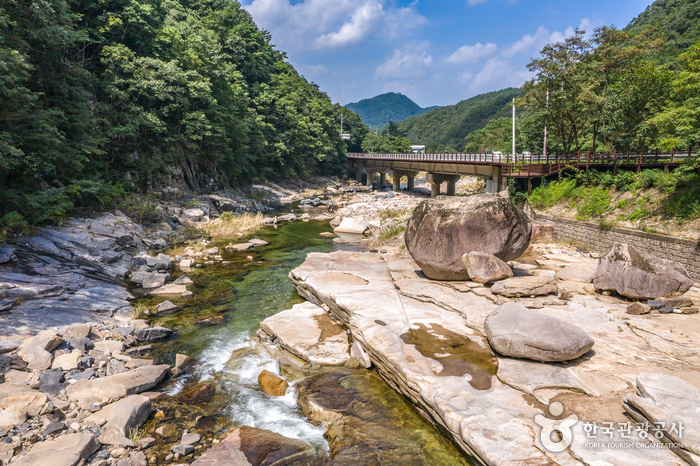
![Gongju Tomb of King Muryeong and Royal Tombs [UNESCO World Heritage] (공주 송산리 고분군과 무령왕릉 [유네스코 세계문화유산])](http://tong.visitkorea.or.kr/cms/resource/95/2678695_image2_1.jpg)
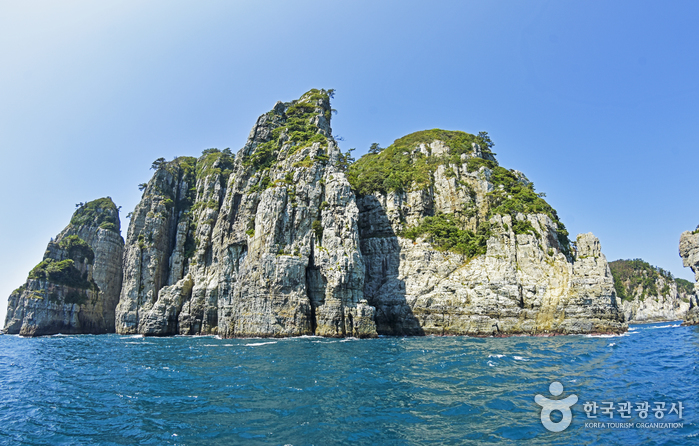
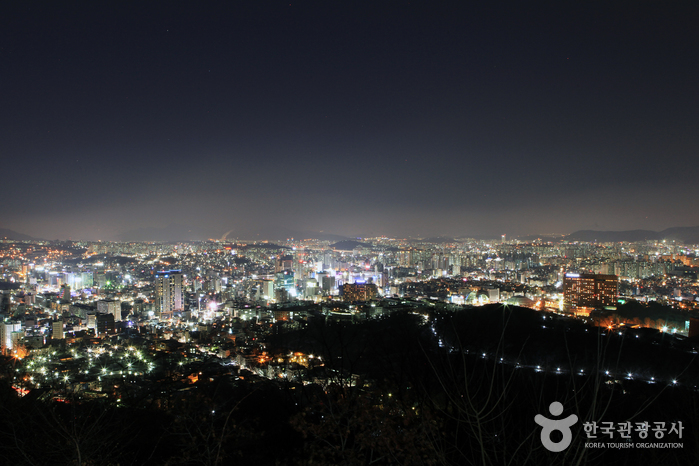
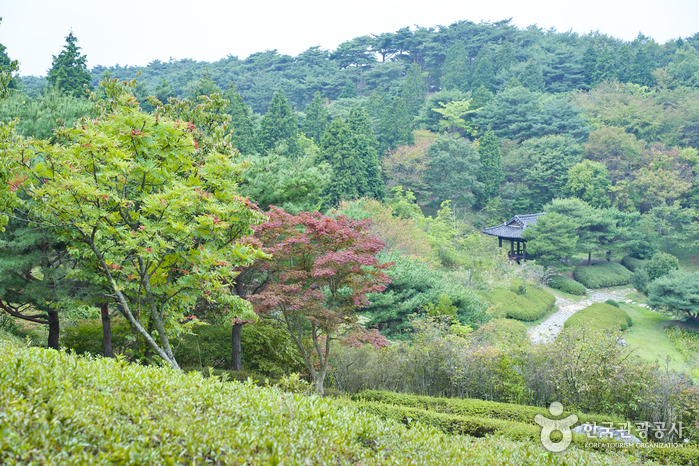
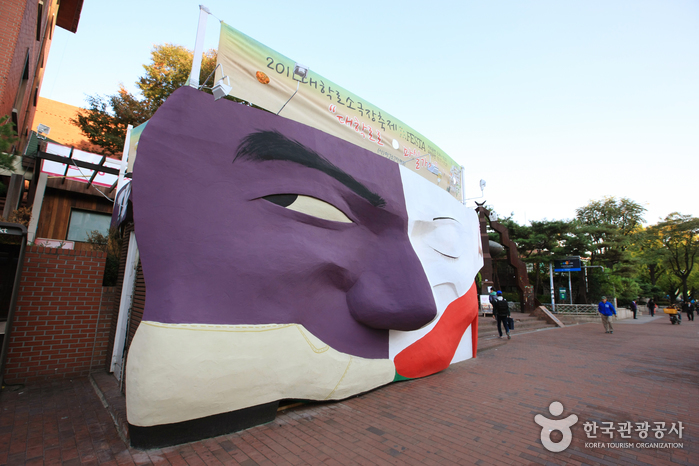

 English
English
 한국어
한국어 日本語
日本語 中文(简体)
中文(简体) Deutsch
Deutsch Français
Français Español
Español Русский
Русский